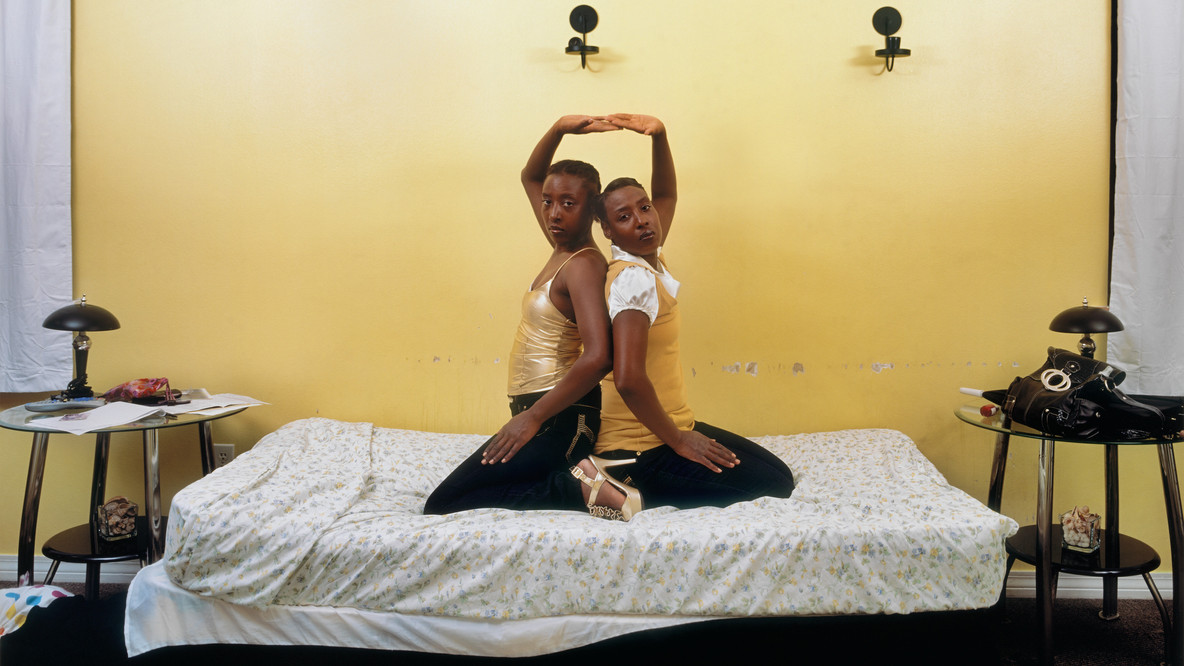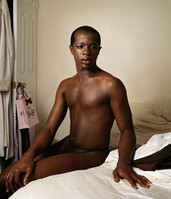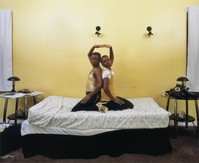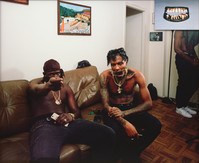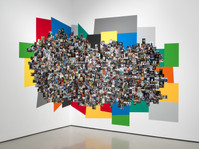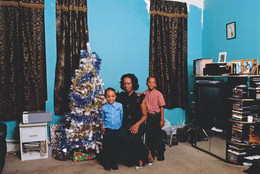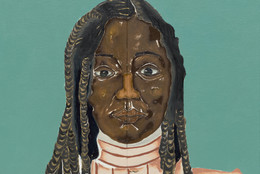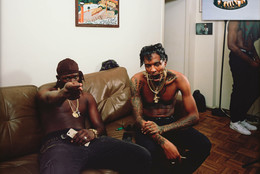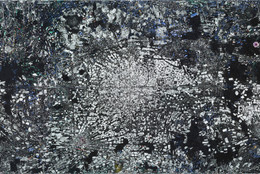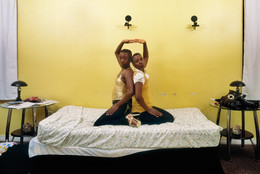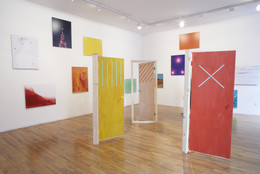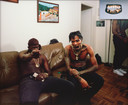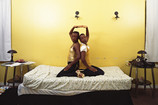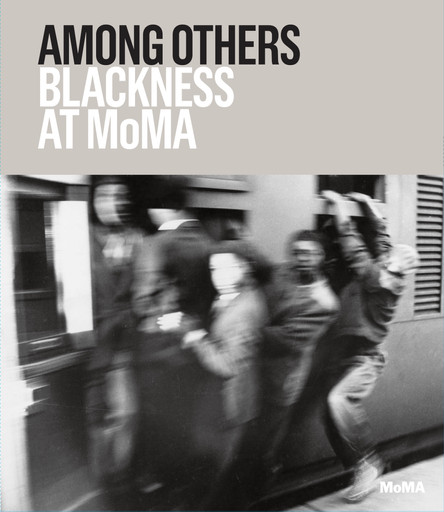“I wanted to find the familiar or find what felt like family, but through strangers.”
Deana Lawson
Working closely with her subjects on setting, lighting, and pose, photographer Deana Lawson creates intimate depictions of Black bodies interacting in both public and private spaces. The resulting images are formally rigorous in terms of composition—every detail is meticulous and motivated—as well as suggestive of Lawson’s personal connection with those she photographs. In Roxie and Raquel, New Orleans, Louisiana, two women—twin sisters—kneel in the center of a wide bed, facing away from each other, their backs touching. Each raises one arm above her head, gently touching her sister’s hand, in a choreographed posture evocative of a stylized sculpture or a ritualistic, dancelike gesture. Both look toward the camera, but their expressions are not identical, and indeed the entire image is a study in similarity and difference.
Paying careful attention to cropping and to richly meaningful domestic interiors, Lawson has situated these twins in conversation with a series of doubled objects: two white curtains hang in front of two windows, two black lamps sit on matching glass-topped tables at either side of the bed. Yet she has also captured one of the paradoxes of twinning, as nothing is a mirror image of its double—the two sconces on the wall, for instance, are off center, challenging the photograph’s symmetry. Both women wear yellow tops, echoing the painted wall behind them, but their outfits also reflect a contrast: one sister is dressed in a shiny skintight tank top and high heels, the other in a more demure frilly blouse. The scattering of stuff on the tables, the rumpled sheet of the slightly sagging bed, and the visible scrape that runs horizontally along the wall all contribute to the viewer’s sense of being granted partial visual access to a truly inhabited room, glimpsing the relationships that unfold within it. Yet rather than being presented as mythological or symbolic, Roxie and Raquel are shown as specific and individuated, and their frank gazes at the viewer refuse to capitulate to voyeurism.
Lawson often approaches strangers who catch her eye in stores or on the street and then establishes relationships with them, cultivating the mutual trust that is crucial for her art. She has said, “Many subjects have expressed that because I am a woman they have felt comfortable posing for my camera. I am always honored and appreciative to be let in. I understand that it is a privilege.” She draws on several traditions of photography, from vernacular snapshots to staged studio portraiture to the work of other Black women artists such as Carrie Mae Weems. Although she began her career focusing on telling African American stories through photographs, since 2013 she has expanded her interest in Black lives globally and has traveled to countries such as Ethiopia, Haiti, and Jamaica. Regardless of where her photographs are taken, saturated color continues to be a signature feature of Lawson’s practice, and in Roxie and Raquel the multiple yellows, whites, and blacks in the scene come together in a complex and compelling picture of family dynamics.
Originally published in Among Others: Blackness at MoMA, ed. Darby English and Charlotte Barat (New York: The Museum of Modern Art, 2019)
Julia Bryan-Wilson, independent scholar
Opening quote is from MoMA Audio interview, 2011
